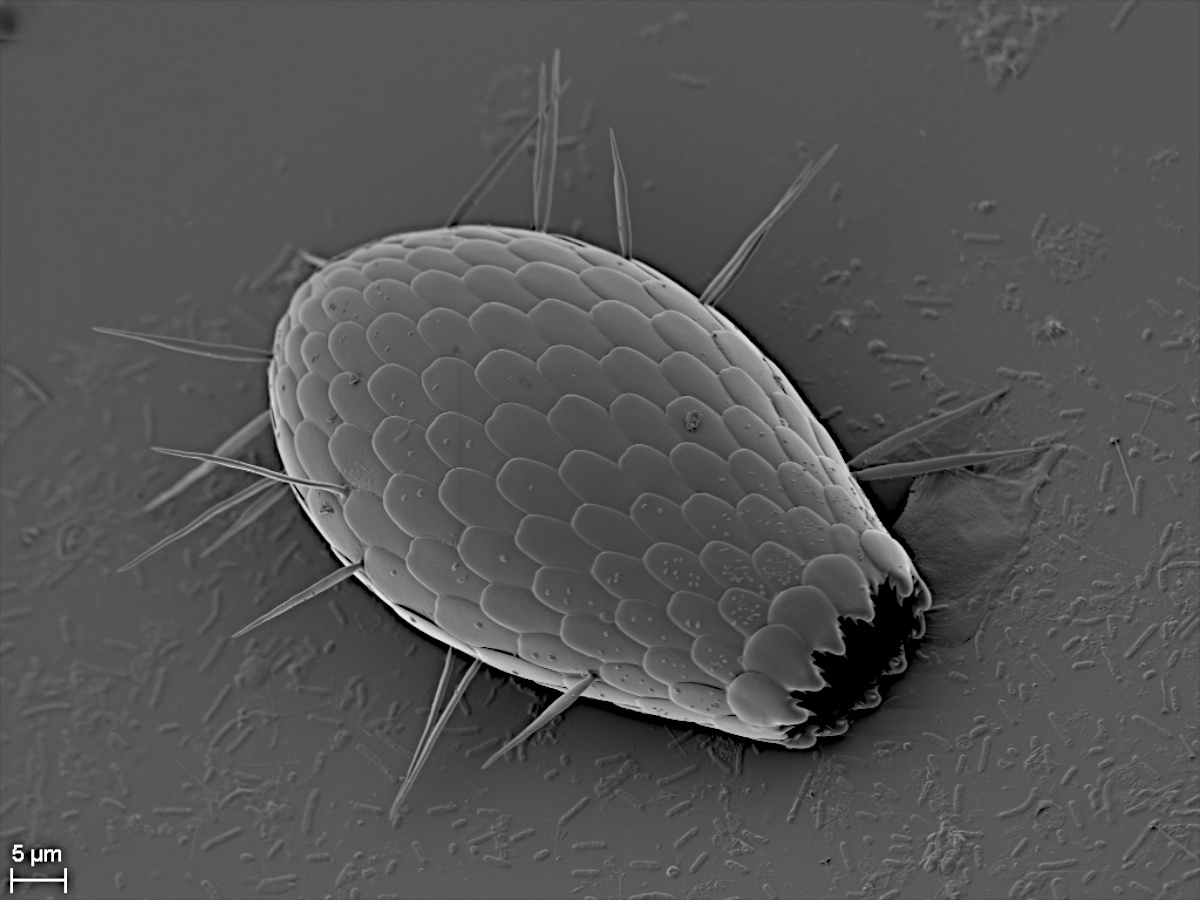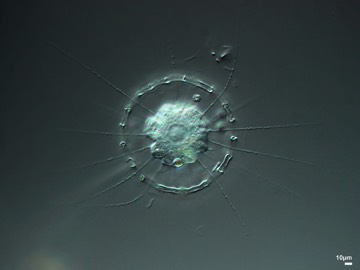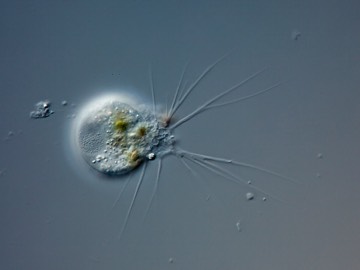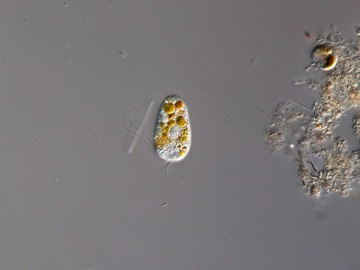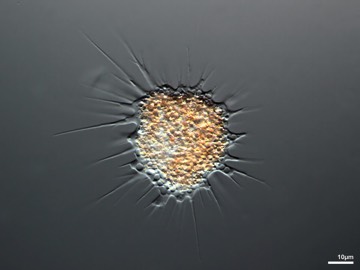Cercozoa Cavalier-Smith 1998, emend. Adl et al. 2005
This is a group of flagellates and amoebae defined by molecular phylogenies. The amoeboid genera have either filose pseudopodia (filopodia) or networks of anastomosing reticulopodia. Very often with cysts.
This is a group of flagellates and amoebae defined by molecular phylogenies. The amoeboid genera have either filose pseudopodia (filopodia) or networks of anastomosing reticulopodia. Very often with cysts.
1. Granofilosea Cavalier-Smith and Bass 2009
With very delicate reticulopodia bearing frequent regular extrusomes.
Including: Apogromia, Belaria, Clathrulina, Ditrema, Liminofila, Microcometes, Microgromia, Paralieberkuehnia.
Gallery
Including: Apogromia, Belaria, Clathrulina, Ditrema, Liminofila, Microcometes, Microgromia, Paralieberkuehnia.
Gallery
2. Thecofilosea Cavalier-Smith 2003, emend. Cavalier-Smith 2011
Ancestrally with robust organic extracellular theca; theca with perforations for cilia and for pseudopodia; ventral filose pseudopodia emerge from ventral groove.
Including: Diaphoropodon, Lecythium.
Gallery
Including: Diaphoropodon, Lecythium.
Gallery
3. Glissomonadida Howe & Cavalier-Smith 2009, emend. Hess et al. 2013
Small (<15 µm), naked biflagellate cells, bacterivorous or algaevorous.
Including: Viridiraptor.
Gallery
Including: Viridiraptor.
Gallery
4. Vampyrellida West 1901, emend. Hess et al. 2012
Naked, phagotrophic amoeboid organisms; amoeboid, free-moving trophozoites alternating with an obligatory digestive cyst.
Including: Leptophrys, Hyalodiscus, Vampyrella.
Gallery
Including: Leptophrys, Hyalodiscus, Vampyrella.
Gallery
5. Imbricatea Cavalier-Smith 2011
Cells with secreted surface silica scales.
Including: Cyphoderia, Euglypha, Pareuglypha, Trinema, Paulinella.
Gallery
Including: Cyphoderia, Euglypha, Pareuglypha, Trinema, Paulinella.
Gallery
